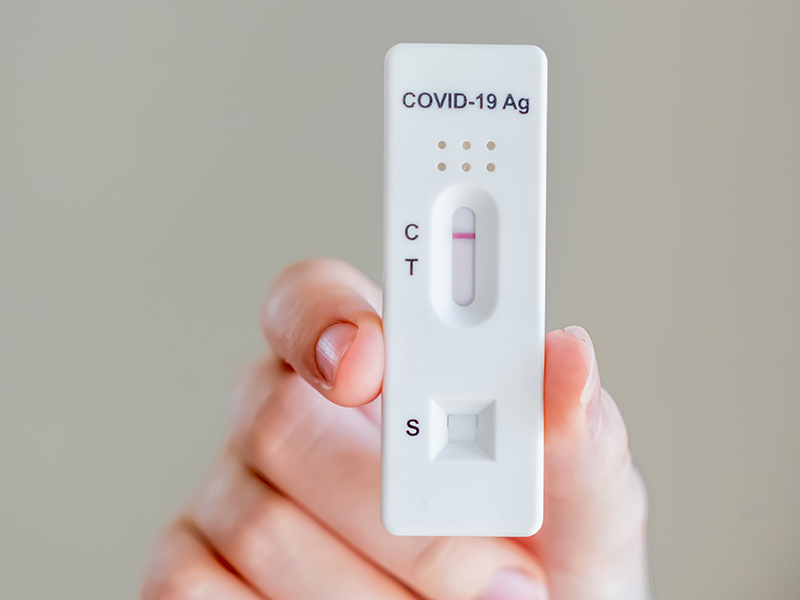The at home COVID-19 testing key to Australia’s pandemic recovery is not accessible to blind and low vision users, prompting warnings from advocates the sudden shift to self-testing has created an unacceptable risk to the community.
Disability groups are now calling for a national approach to at home testing for vulnerable people to minimise the risk, warning only one state currently offers such a service. The instructions, administration procedure and results of rapid antigen tests (RAT) rely on visual cues and complex steps.
More accessible tests with tactile or audio feedback are not yet available, leaving blind and low vision users, as well as other people with a disability, reliant on others to assist with at-home testing.
This creates new risks of further contact with support staff, friends and family, and a requirement for more test amid a national shortage of RATs.

“In their current form, rapid tests are likely to be unusable for a large part of the blind and low vision community,” Vision Australia chief executive Ron Hooton said.
“Forcing people who are blind or have low vision to potentially expose friends, family or support workers to COVID for assistance carrying out a rapid test is unacceptable, but this is the reality for many as governments move away from PCR testing.”
Mr Hooton said the blind and low vision community understands the importance of fast at home testing to the pandemic recovery but the rapid shift to RATs is posing a “serious challenge”.
Vision Australia is now calling for a national approach to at home testing support for people with a disability modelled on the Victorian government’s service until more accessible tests are available.
For the last 18 months, the Victorian government has been offering a Call-to-Test service for vulnerable citizens, including those with a disability. State-wide, eligible Victorians can use a hotline to arrange a health clinician to visit their home to conduct a test.
A similar service is not available from other states and territories or from the federal government which is responsible for providing COVID-19 support to large parts of the aged care and disability sector.
While the federal government has moved to make a limited number of RATs free for people with a disability that hold an eligible concession card and subsidises them for NDIS workers, some blind and low vision users may not qualify and accessing the free tests at pharmacies still presents risks.
“What if you think you actually have COVID and you’re supposed to stay home,” said Blind Citizens Australia chief executive officer Sally Aurisch.
“You don’t really want to go out in public. You might not even feel well enough to go.”
Ms Aurisch would also like a national approach to at home testing modelled on Victoria’s service.
“I think that at present that is the only real solution to this issue until we can get a test that isn’t completely visual.”
The Department of Health did not respond by deadline to repeated requests for information the accessibility of the RATs it is procuring or how it was providing support to blind and low vision users.
“The Australian government has a responsibility to people with disability to make sure that support is in place and ensure that we are made safe,” said People with Disability Australia president Samantha Connor.
“That includes access to rapid antigen and PCR testing, access to information including test results, and access to equitable health care.”
Other countries moved quickly to provide more equitable access to at home testing, including the UK, which offers PCR testing for free through a hotline and home delivery service.
Early last year the UK Health department partnered with the Royal National Institute of Blind People to improve home testing service, offering a video call support service with specially trained staff to providing remote assistance, as well as audio and braille instructions.
Inventors in the UK have also developed an accessible home pregnancy test they say could be adapted to rapid COVID-19 testing. The pregnancy test uses a small motor to produce bumps based on the chemical changes detected.
The inventors this week said a similar COVID-19 test could eventually be made available for as little as $28 and possibly made cheaper by manufacturers.
Do you know more? Contact James Riley via Email.


A break twist single object that can be read via an app or tactile readout – less waste for all users and less packaging, easier to use. It’s not just vision impaired it’s also arthritis and mobility users – excess waste issues with all current tests – please put this to to the industrial design depts at universities or companies to solve. It’s wasteful poor design all round.